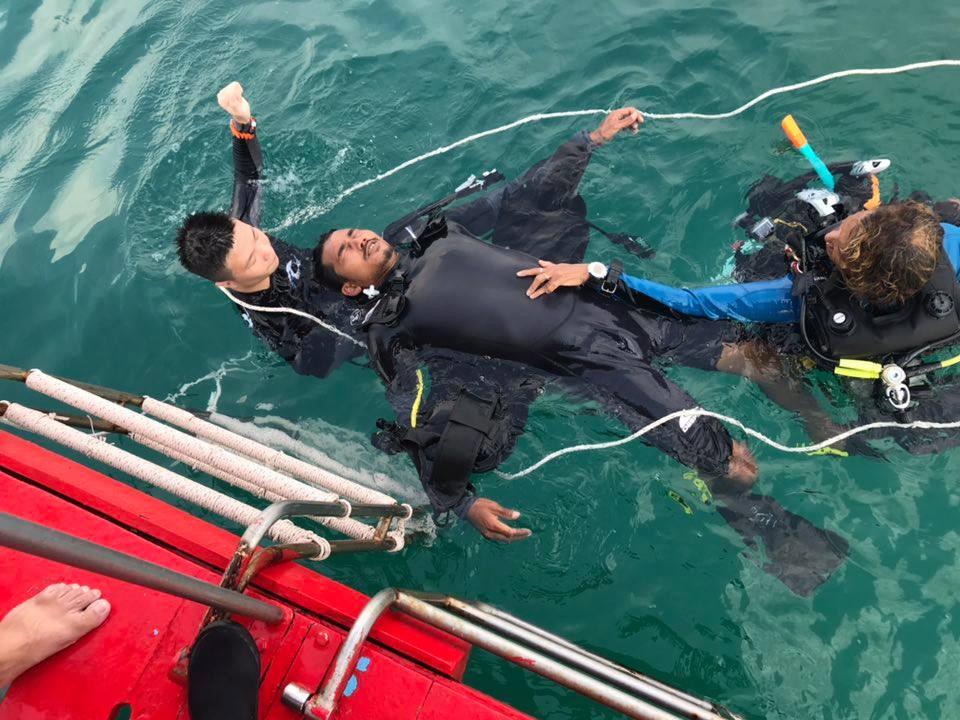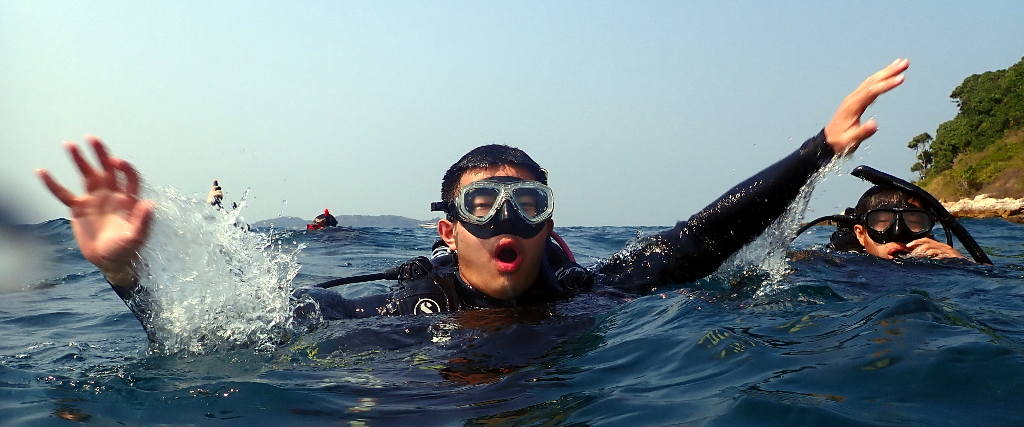
What if my buddy panics?
During the distressed diver underwater exercise, we’ll look at how to deal with three potential situations. Helping a diver who is suffering from over-exertion, dealing with a panicking diver who is swimming like hell for the surface, and supplying air to another diver in an emergency, making a safe ascent and providing physical support to the diver during oral BCD inflation.
What if my buddy disappears?
This exercise focuses on organising and carrying out search patterns for a missing diver. Depending on conditions such as visibility, current, depth and how much information you have, you might decide to carry out a search for a missing diver in different ways. If the area is shallow with good visibility, you might include snorkellers. If the site is deep and visibility is poor you might choose a highly controlled pattern for buddy teams. You need to evaluate the situation well.
Found him! Now what?
Here we will look at how to safely bring an unconscious diver to the surface. What should you do if the reg is out of his mouth? How can you make sure that any air trapped in his lungs can escape as it expands, without causing a lung injury? Which method should we use to avoid bringing him up to the surface too fast? What if the diver’s BCD isn’t inflating?
Ok he’s up. Finished?
Well, no. You would still have to get him back to the boat or shore. So first, we would call for help while fully inflating his BCD and dropping his weights, then turn him face up, remove his mask and regulator. Open his mouth and airway to check for breathing. If necessary, begin mouth-to-mouth or mouth-to-pocket mask rescue breaths while pulling him through the water and removing his, and your, equipment. Don’t worry we won’t ask you to perform real mouth-to-mouth rescue breathing on your instructor.
What about getting him out of the water?
Many docks and dive boats have ladders and dive platforms that are quite a lot higher than the water’s surface. We’ll look at different methods for safely lifting a conscious or unconscious diver onto a boat or up a dock ladder, with all equipment removed. We’ll also check how to drag someone onto a beach safely.
Thank goodness! He’s safe!
Not yet he isn’t. This is where you begin to apply the lessons learned from the Emergency First Response course’s CPR (cardio-pulmonary resuscitation) lessons and how to provide emergency oxygen to the diver. There are different requirements for a breathing, non-breathing or weakly breathing diver, so it’s important to know how much oxygen flow you need and, of course, how to set up the equipment. Emergency First Response is a separate course that can be taught 100% onshore and is often used to meet workplace safety training standards. You can find out more about it here.
Wow, that was pretty intense!
Yes, let’s do it all over again, with a focus on responding from shore or from a boat.
And then, finished?
Well, it’s a two- or three-day course. You also have to put it all together in two different scenarios, one underwater and another from shore or boat. It’s a great workout, quite exciting and you’ll burn many calories! Welcome to the family.


